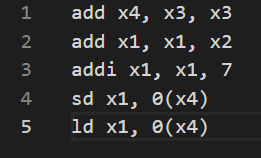I'm a Wealth Management Technology Analyst at Morgan Stanley. I recently graduated from Duke University with a B.S in Computer Science and Statistical Science. I was a REU research student in Columbia University's EE department in the WiMNet Lab as well as a research intern in Duke ECE's lab.
I love tinkering with idea/concepts related to my professional field (machine learning, finance, time-series analysis), but also others that are completely unrelated (RISC-V, airline pricing, computational linguistics, cartography, etc). Feel free to explore my past and ongoing projects!
Ongoing Projects - celebi-pkg 🗺
Here are a list of ongoing projects that will be updated frequently on GitHub.
riscv-assembler Python Package (Documentation) ⚙️
This is a Python package that is currently available to use. The package provides tools for converting RISC-V Assembly to machine code. It has some useful tools such as converting whole files into machine code as well as analyzing individual instructions. While a version is currently up and running on PyPi, I continue to update it and add more features. Check it out and let me know how it works and if it needs something extra!
A regression model that can predict the Dow Jones Industrial Average and the Volatility Index based on Wall Street Journal news headlines. Check out the updates here
Google Flight Analysis (Documentation)🛩
This project provides tools and models for users to analyze, forecast, and collect data regarding flights and prices. There are currently many features in initial stages and in development. The current features (as of 8/29/22) are:
- Scraping tools for Google Flights
- Base analytical tools/methods for price forecasting/summary
- Models to demonstrate ML techniques on forecasting
- API for access to previously collected data



